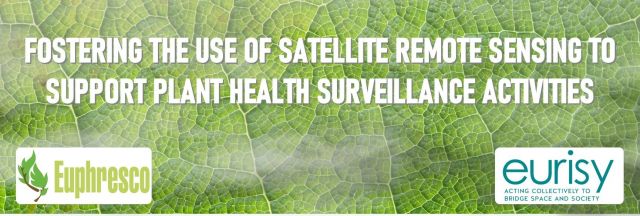Messages to the above: looking at art from the sky
Eurisy aims at seizing the interest of the space community towards arts to launch a project specifically dedicated to “Space for Arts”. Today, the availability of new technologies and digital tools allows for unexpected synergies among artists and space experts. Indeed, the space sector is including arts among its areas of interest, as shown by the organisation of a session dedicated to Contemporary Arts Practice and Outer Space within the International Astronautical Congress. This interest is motivated by the multiplication of photographic, video and graphic experiences (also including VR and 3D), inspired or powered by space. Satellite imagery in particular, has been not only used to show the artistic beauty of the planet, but also to capture large artworks from the sky.
This paper provides a short introduction on how aerial photography and satellite imagery have changed our way of looking at the Earth, inspiring art movements and allowing for the discovery and appreciation of ancient and more recent artworks.




 What’s the interest of realising an artwork that can only be appreciated in its entireness from the sky? Apparently, none. Nevertheless, giant artworks perceivable only from above have been realised since the most ancient times, while the history of architecture counts endless examples of sophisticated buildings, castles, gardens and the like, which plan or ichnography can be only seen clearly by watching at them downward from above.
What’s the interest of realising an artwork that can only be appreciated in its entireness from the sky? Apparently, none. Nevertheless, giant artworks perceivable only from above have been realised since the most ancient times, while the history of architecture counts endless examples of sophisticated buildings, castles, gardens and the like, which plan or ichnography can be only seen clearly by watching at them downward from above.


 Eurisy and the Space Generation Advisory Council (SGAC) decided to join forces to organise a webinar on the legal consequences related to the use of tracing apps during the first phase of the de-confinement. Find out which existing space-based apps can help track the spread of COVID-19, and what the legal issues are with regard to privacy. The purpose of the webinar was to present the audience operational space-based apps that could help trace patients, as well as to reflect upon data protection and other challenges. Read the full report here.
Eurisy and the Space Generation Advisory Council (SGAC) decided to join forces to organise a webinar on the legal consequences related to the use of tracing apps during the first phase of the de-confinement. Find out which existing space-based apps can help track the spread of COVID-19, and what the legal issues are with regard to privacy. The purpose of the webinar was to present the audience operational space-based apps that could help trace patients, as well as to reflect upon data protection and other challenges. Read the full report here. On the occasion of the
On the occasion of the